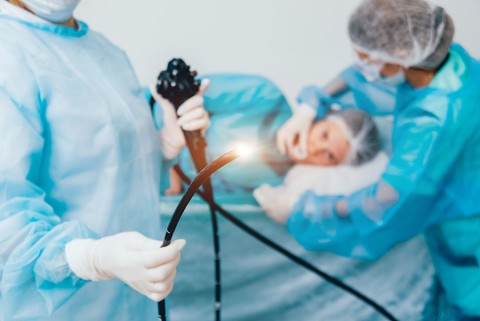By Category
Blog Categories
Endoscope Repair
Repair of an endoscope might not be the first thought that comes to mind when encountering an issue with an endoscope your medical office relies on. And while repair may not be a viable option in every situation, it should at least be considered because a high-quality repair may bring the endoscope back into service with no down-sides and at a much-reduced cost compared to purchasing a new one.
An Endoscope is a medical device which is used for visually examining the human body internally. Typically, these specialty medical devices are used for procedures including gastroenterology, urology, otolaryngology amongst othersDue to nature of these types of procedures and the risks involved it's critical that the repair facility and their technicians are experts in the field with the proper training to handle the repair with the utmost quality control while meeting all endoscope industry standards and regulatory requirements for the safety of your patients.
Whether your medical practice uses flexible endoscopes (used for colonoscopies), rigid endoscopes (used for arthroscopy) or capsule endoscopes (small cameras that are able to be swallowed), each type may be able to be repaired. That being said each type may also require different types of repairs or different vendors offering the repair services based on their expertise.
Some repairs are avoidable by implementing and sticking to a regular maintenance routine. Cleaning, disinfection and inspection each time the device is used is mandatory and can assist with making sure that the device functions properly for a long time. Improper storage and handling of endoscopes is another culprit of these devices prematurely failing. It's critical that your office have a maintenance routine and guidelines for the handling and storage of these devices.
There's a number of common repairs that can be made to endoscopes and some that are less common. Some of these repair types are listed below with the possible repair that might be necessary.
Endoscope Lens Damage
Lens damage can occur in a variety of situations. Sometimes scratches or scuffing can occur during the handling of the scope. It also could occur if it were to come into contact with any type of abrasive surface. Repair of these scratches or scuff marks might include polishing or buffing the lens to remove the damage. If the damage is more significant then the lens itself may need to be replaced and recalibrated.
Cracks or chips can also show up on the scope lens which might distort the image quality. Typically, this would require a lens replacement and recalibration to repair the endoscope.
Dust and debris can build up over time as well. This might affect the image clarity. Routine maintenance, cleaning and inspection can typically prevent this situation.
Chemical Damage is another possibility for scope lenses. This includes contact with improper cleaning solutions that might corrode or create hazing of the lens. Depending on the amount of damage buffing and polishing might handle the repair.
Fogging and Hazing can also sometimes be caused by moisture build-up behind the lens. In these cases the endoscope may be disassembled, cleaned and re-sealed to correct the issue.
Optical Fiber Damage
Optical fiber is typically used to connect the lens to transmit light and images. Damage to any of these fibers can cause image distortion or even the complete loss of signal. In these rare cases the fiber would need to be replaced and recalibration may be required.
Fluid Infiltration
Fluid Infiltration is a significant issue that likely will cause issues with your endoscope. It happens when water, cleaning solutions or bodily fluids breaches the endoscope's internal components. This issue can cause substantial damage and should be handled immediately.
Some of the causes of fluid infiltration might be:
- Improper Cleaning or Sterilization
If an endoscope is inadequately cleaned or sterilized residual cleaning solutions or water might be left on the scope which could infiltrate components during subsequent procedures. - Sheath Damage
A sheath is a protective covering. If the sheath were to develop tears or any other type of damage it might allow fluids to penetrate the device. - Seal Damage
Worn or damaged seals and O-rings can become a problem. These seals and O-rings are supposed to prevent fluids from seeping into the endoscope's inner components. But age, lack of maintenance or mis-use can create circumstances where fluids infiltrate the scope. - Leaks
Leaks can occur during procedures. Fluids like irrigation solutions might escape from irrigation channels or insufflation and enter the scope components.
There's a number of issues that are caused by fluid infiltration including image quality, contamination and internal damage to the endoscope itself. Exposure to these fluids can cause significant damage to the optical system, electronic components and articulation mechanisms.
How to Repair an Endoscope with Fluid Infiltration
While specific steps for repair would be based on your specific situation below are some repair steps that might be applied in some cases.
Technicians must first evaluate and identify the source of the infiltration and assess the damage caused. Disassembly more than likely will be necessary to fully assess the situation and what repairs might be necessary. The internal components would need to be fully cleaned and all foreign fluids and contaminants removed. The cleaning process would typically also include flushing the channels with proper cleaning solutions.
After cleaning, the seals and O-rings may need to be replaced so that the watertight integrity of the endoscope's internal components is reestablished.
The optical system would and other components would need to be carefully inspected to identify any items that might require replacement.
After all the repairs are complete, the endoscope would need to be fully recalibrated to ensure it's working properly.
Strict cleaning, sterilization and maintenance routines assist with fluid infiltration prevention. This along with proper training, handling, storage and adherence to the manufacturer's guidelines decrease the risk of fluid infiltration a great deal and increase the longevity and reliability of endoscopes.


